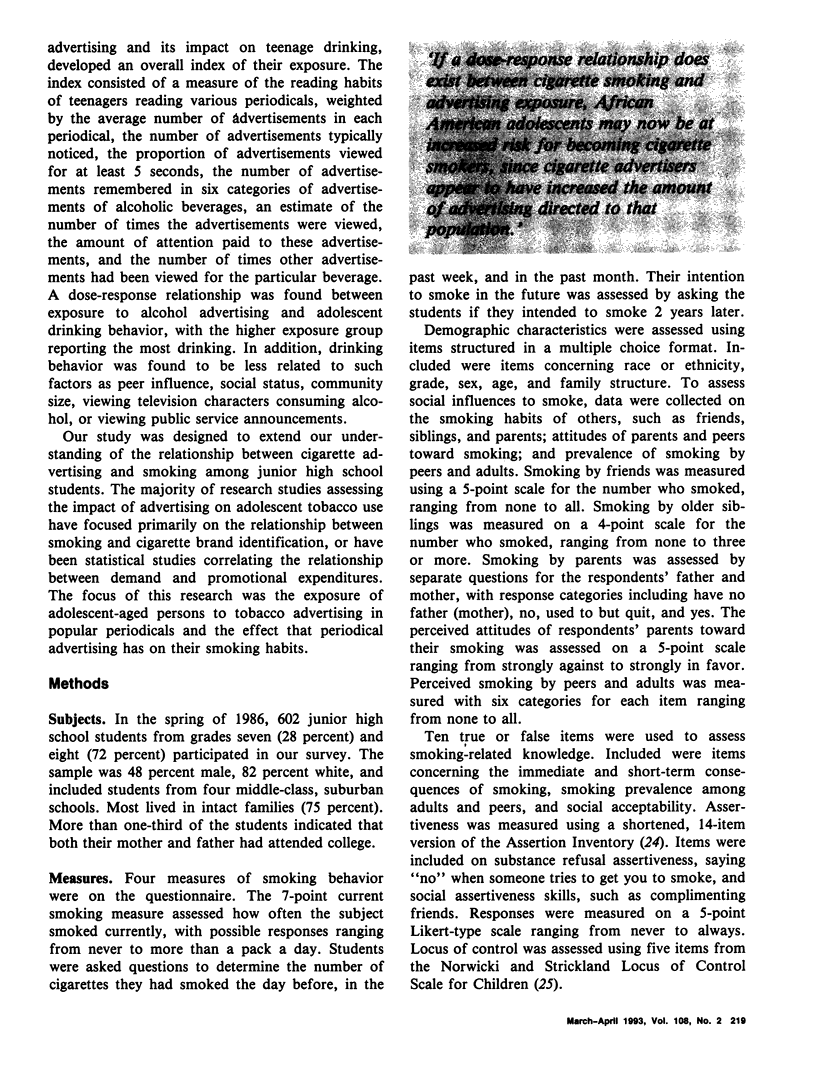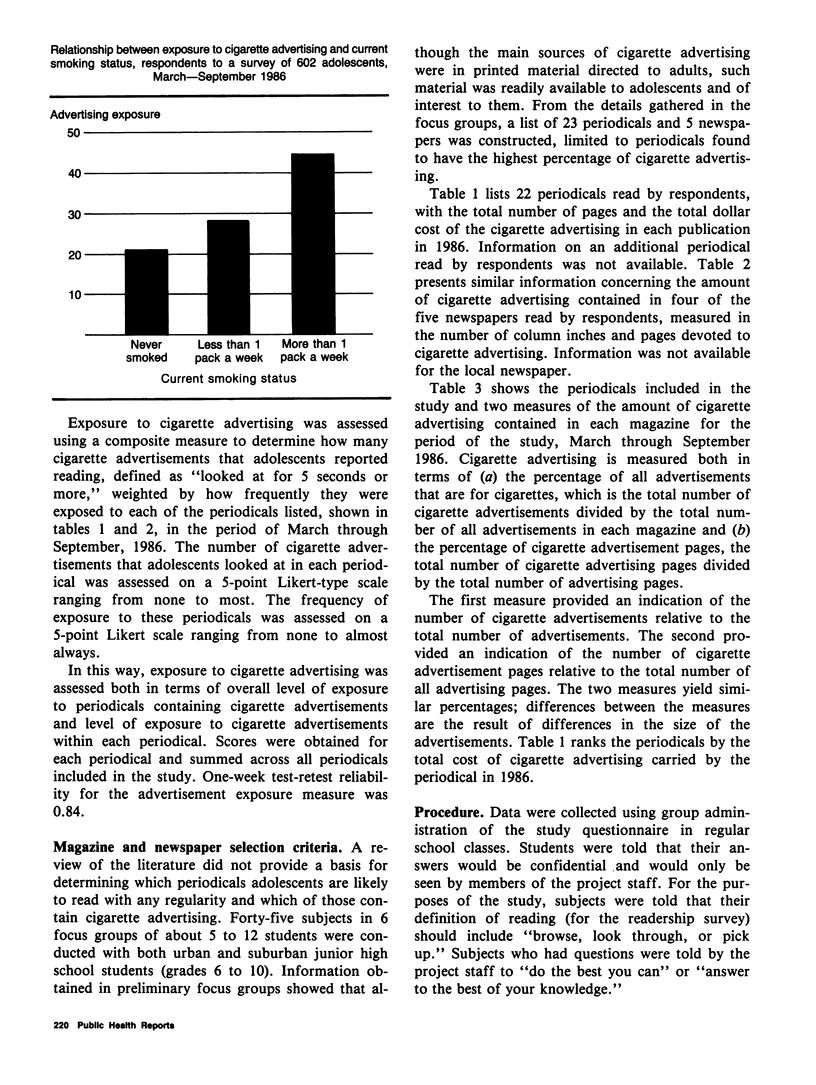Abstract
The purpose of the study was to explore the relationship between the exposure of adolescents in the seventh and eighth grades to cigarette advertising and their being smokers. A survey questionnaire given to 602 adolescents assessed their exposure to cigarette advertising and provided measures of their smoking behavior, demographic characteristics, and some psychosocial variables. The results indicated that exposure to cigarette advertising and having friends who smoked were predictive of current smoking status. Adolescents with high exposure to cigarette advertising were significantly more likely to be smokers, according to several measures of smoking behavior, than were those with low exposure to cigarette advertising. The findings extend previous research identifying factors that may play a role in the initiation and maintenance of smoking among adolescents.
Full text
PDF







Selected References
These references are in PubMed. This may not be the complete list of references from this article.
- Aitken P. P., Leathar D. S., O'Hagan F. J. Children's perceptions of advertisements for cigarettes. Soc Sci Med. 1985;21(7):785–797. doi: 10.1016/0277-9536(85)90127-3. [DOI] [PubMed] [Google Scholar]
- Aitken P. P., Leathar D. S., O'Hagan F. J., Squair S. I. Children's awareness of cigarette advertisements and brand imagery. Br J Addict. 1987 Jun;82(6):615–622. doi: 10.1111/j.1360-0443.1987.tb01523.x. [DOI] [PubMed] [Google Scholar]
- Albright C. L., Altman D. G., Slater M. D., Maccoby N. Cigarette advertisements in magazines: evidence for a differential focus on women's and youth magazines. Health Educ Q. 1988 Summer;15(2):225–233. doi: 10.1177/109019818801500207. [DOI] [PubMed] [Google Scholar]
- Blum A. The Marlboro Grand Prix. Circumvention of the television ban on tobacco advertising. N Engl J Med. 1991 Mar 28;324(13):913–917. doi: 10.1056/NEJM199103283241310. [DOI] [PubMed] [Google Scholar]
- Botvin G. J., Schinke S. P., Orlandi M. A. Psychosocial approaches to substance abuse prevention: theoretical foundations and empirical findings. Crisis. 1989 Apr;10(1):62–77. [PubMed] [Google Scholar]
- Chapman S., Fitzgerald B. Brand preference and advertising recall in adolescent smokers: some implications for health promotion. Am J Public Health. 1982 May;72(5):491–494. doi: 10.2105/ajph.72.5.491. [DOI] [PMC free article] [PubMed] [Google Scholar]
- Cummings K. M., Giovino G., Mendicino A. J. Cigarette advertising and black-white differences in brand preference. Public Health Rep. 1987 Nov-Dec;102(6):698–701. [PMC free article] [PubMed] [Google Scholar]
- Davis R. M. Current trends in cigarette advertising and marketing. N Engl J Med. 1987 Mar 19;316(12):725–732. doi: 10.1056/NEJM198703193161206. [DOI] [PubMed] [Google Scholar]
- Goldstein A. O., Fischer P. M., Richards J. W., Jr, Creten D. Relationship between high school student smoking and recognition of cigarette advertisements. J Pediatr. 1987 Mar;110(3):488–491. doi: 10.1016/s0022-3476(87)80523-1. [DOI] [PubMed] [Google Scholar]
- Tye J. B., Warner K. E., Glantz S. A. Tobacco advertising and consumption: evidence of a causal relationship. J Public Health Policy. 1987 Winter;8(4):492–508. [PubMed] [Google Scholar]
- Warner K. E., Goldenhar L. M. The cigarette advertising broadcast ban and magazine coverage of smoking and health. J Public Health Policy. 1989 Spring;10(1):32–42. [PubMed] [Google Scholar]
- Warner K. E. Tobacco industry response to public health concern: a content analysis of cigarette ads. Health Educ Q. 1985 Summer;12(2):115–127. doi: 10.1177/109019818501200111. [DOI] [PubMed] [Google Scholar]


